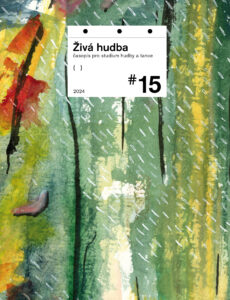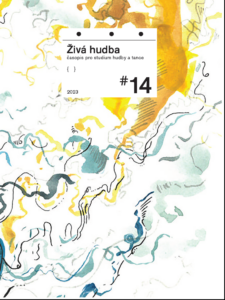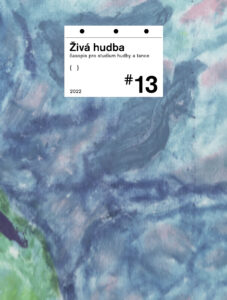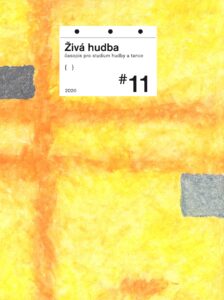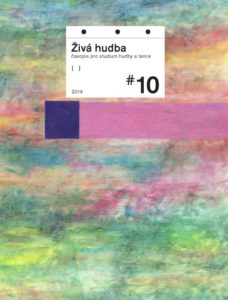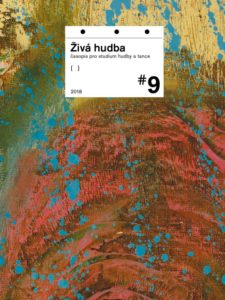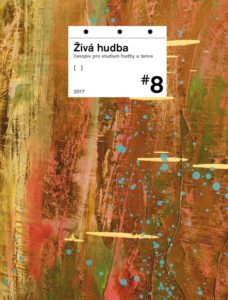Abstrakt Nagauta shamisen performer, founder of the genre “Sōsaku Kamigata-Jōruri”, and Japanese composer Tōon Katsusuke Nakajima (1940-2009) was a prolific forward thinker of traditional instruments and music through a complex web of musical practices, historic roles, and deeply developed traditions with new and creative compositional solutions. His composition, Mizu No En (The Water’s Grudge) (1969), for shamisen, voice, and fue (shinobue and nōkan flute) is a hauntingly provoking example that questions the role of Japanese traditional instruments and performers/composers within modern music through revealing the process of modernising a tradition based on its own inherited musical aesthetics and practice. Examining this piece’s incorporation of modernity, traditional idioms, instrumental roles and musical-cultural contexts highlight how Japanese traditional music can coexist within the modern music scene while retaining its own identity and original aesthetic. The music analysis process itself will also be brought into question as its influence has historically limited, overshadowed, and diminished the appreciation of Japanese “performer/composers”, as well as Japanese instruments themselves. This research includes personal experiences as a composer, teacher, researcher and Japanese instrumental performer living in Tokyo, and first-hand interviews with performers, students, and family members connected with Nakajima. This paper will reveal new opportunities for Japanese traditional instrumental roles and performances within contemporary music when enriched by the ideas and traditions from their own history, hopefully expanding the possibilities for modern music.


Colleen Christina Schmuckal:
Advantages of a Traditional Centre for Compelling Modernity: Examining the Roles of Japanese Traditional Instruments in Contemporary Music Through the Analysis of Katsusuke Nakajima’s Mizu no En
Stati a studie / Živá hudba 2021/12 / Publikováno 29. 4. 2022
Abstrakt:
Nagauta shamisen
performer, founder of the genre
“Sōsaku Kamigata-Jōruri”, and
Japanese composer Tōon Katsusuke Nakajima (1940-2009)
was a prolific forward thinker of
traditional instruments and music
through a complex web of musical
practices, historic roles, and deeply
developed traditions with new and
creative compositional solutions.
His composition, Mizu No En (The
Water’s Grudge) (1969), for shamisen, voice, and fue (shinobue and
nōkan flute) is a hauntingly provoking example that questions the role
of Japanese traditional instruments
and performers/composers within
modern music through revealing the
process of modernising a tradition
based on its own inherited musical
aesthetics and practice. Examining
this piece’s incorporation of modernity, traditional idioms, instrumental
roles and musical-cultural contexts
highlight how Japanese traditional
music can coexist within the modern music scene while retaining its
own identity and original aesthetic.
The music analysis process itself
will also be brought into question
as its influence has historically
limited, overshadowed, and diminished the appreciation of Japanese
“performer/composers”, as well as
Japanese instruments themselves.
This research includes personal
experiences as a composer,
teacher, researcher and Japanese
instrumental performer living in
Tokyo, and first-hand interviews
with performers, students, and
family members connected with
Nakajima. This paper will reveal
new opportunities for Japanese
traditional instrumental roles and
performances within contemporary music when enriched by the
ideas and traditions from their own
history, hopefully expanding the
possibilities for modern music.
Citace:
Colleen Christina Schmuckal. Advantages of a Traditional Centre for Compelling Modernity: Examining the Roles of Japanese Traditional Instruments in Contemporary Music Through the Analysis of Katsusuke Nakajima’s Mizu no En. Živá hudba 2021/12. On-line <https://ziva-hudba.info/advantages-of-a-traditional-centre-for-compelling-modernity-examining-the-roles-of-japanese-traditional-instruments-in-contemporary-music-through-the-analysis-of-katsusuke-nakajimas-mizu-no/> [18. 7. 2025].
Kopírovat
Vyšlo v časopise
Živá hudba 2021/12
Rubrika: Stati a studie
Publikováno: 29. 4. 2022
PDF: download
Klíčová slova:
Instrumental roles, Japanese instruments, Nagauta, Nakajima Katsusuke, New compositional techniques
Články autora:
Colleen Christina Schmuckal (1)
Aktuální čísla časopisu můžete koupit v Nakladatelství AMU.
Citace:
Colleen Christina Schmuckal. Advantages of a Traditional Centre for Compelling Modernity: Examining the Roles of Japanese Traditional Instruments in Contemporary Music Through the Analysis of Katsusuke Nakajima’s Mizu no En. Živá hudba 2021/12. On-line <https://ziva-hudba.info/advantages-of-a-traditional-centre-for-compelling-modernity-examining-the-roles-of-japanese-traditional-instruments-in-contemporary-music-through-the-analysis-of-katsusuke-nakajimas-mizu-no/> [18. 7. 2025].
Kopírovat
Další články
-
Dorota Gremlicová, Lucie Hayashi:
Tanec v hudbě a filmu na turecký způsob
Zprávy | 2024/15 -
Michaela Dzurovčínová:
Prepojenie tanečných a hudobných umelcov a tvorba diela
Stati a studie | 2024/15 -
Veronika Knytlová:
Myslet v pohybu – pohyb v mysli
Stati a studie | 2024/15 -
Ladislav Beneš:
Umělecké počátky tanečníka a choreografa Augustina Bergera. Hostování Miss Aeney…
Stati a studie | 2024/15 -
Barbora Mikolášiková, Lucie Hayashi, Lucie Pešl Šilerová:
Umělecká produkce nové éry
Zprávy | 2024/15 -
Anna Kotyková, Simona Hybenová:
Tanečný kongres – TANEC.SK
Zprávy | 2024 -
Colleen Christina Schmuckal:
Výzkum role japonských tradičních nástrojů v soudobé hudbě: analýza Mizu no En…
Stati a studie | 2021/12
-
Colleen Christina Schmuckal:
Výzkum role japonských tradičních nástrojů v soudobé hudbě: analýza Mizu no En…
Stati a studie | 2021/12



